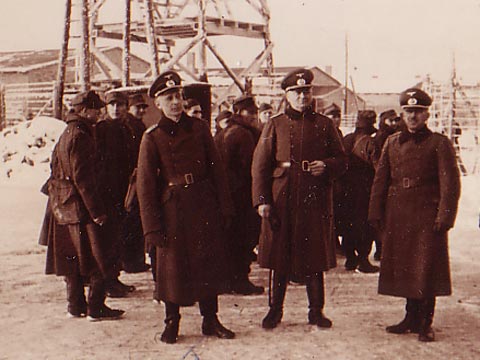Recently my mother gave me some photographs of my grandfather being officer in WWI and WWII. He was born in 1894 and the joined the "Reichswehr" like many other young German men as a volunteer in the age of 20 in 1914.
The following picture was taken in 1917 showing him in his officer´s uniform ("Leutnant" = Second Lieutenant).

Since Hilter-Germany was in need of every single German soldier he was drafted into the "Wehrmacht" in the age of 45 (!!!) as an "Oberleutnant" (First Lieutenant) into the a guard regiment that was responsible to watch for prisoners of war on the island of Rügen.
This picture shows him standing on the left hand side right before a group of Polish POWs.

After the island of Rügen was overrun by the Red Army in the early months of 1945 my grandfather was captured and sent to Russia as a POW. Once arrived there he was accused of being a criminal of war - every soldier of the Wehrmacht guard personal was seen by the Soviets like that - and sentenced by a military court to term of imprisonment for lifetime. He had to do forced labour in mines and changed the prison camps within Russia for more than 10 times. One of the last camps he stayed in was in Svetlovsk behind the Ural mountains where he had to work in a lead mine.
After the Soviet leaders decided in 1955 to set a political sign of good will - West-German chancellor Konrad Adenauer declared that the FRG would join the NATO (!) - my grandfather was one of 10000 former Wehrmacht soldiers sent back home. According to my father he wasn´t the man he used to be - psycholgical broken and chronical ill (bronchitis) due to the work in the mines. He died in 1974.
Although he was lucky one ... at least he survived the two World Wars and was able to see his children and grandchildren growing up. Not many soldiers were able to do so ...









